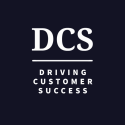Gainsight Pulse 2022 – Geoffrey Moore’s maturity model for Customer Success
SUMMARY: Tech industry icon Geoffrey Moore gives his take on the increasingly strategic role of the customer success function at Gainsight’s Pulse 2022 conference.
The relatively new business function known as Customer Success started out as a support function, but it’s now evolving into a key tool for maintaining and expanding revenue. That’s the view of veteran business guru Geoffrey Moore, who set out a maturity model for customer success at Gainsight’s Pulse 2022 conference last week. He went on to say that customer success teams, therefore, need to look beyond the users they’ve traditionally spoken to and engage with the people who make buying decisions. He explains why this is becoming important at a time of a tightening economy:
There’s somebody that’s paying for [your products]. In times when budgets start to get a little scarce, they start prioritizing. ‘Is this an outcome that we’re going to spend money on or not?’
It’s incredibly important for your company to get signals from what we call the economic buyers in your installed base, to be able to say, are we getting the right stuff? Are we getting to the outcomes we want? And if we’re not, how can we intervene to do it?
Moore is best known for his hugely influential book Crossing the Chasm, published in 1991, which mapped the enterprise adoption path of emerging technology products. More recently, his keynote appearances have focused on how connected technologies are changing how enterprises operate, such as when he spoke at software AG’s conxion event last October. The growing role of customer success is another facet of that phenomenon, as he explains:
In the past, we had a traditional value delivery system built around the product. That was the key to success. Now we’re realizing we want to work more backwards from the customer — I’m going to show you a model for that. In this modern world, the notion of getting the product and the customer better connected than we ever had before, is where we’re going to go for the future.
Focus on outcomes and value
Moore believes that the evolution of customer success is culminating in a focus on customer outcomes — by the way, we’ve taken a similar view in recent articles on diginomica. Having started out in the on-premise world as effectively technical support, helping customers to get the product working successfully, in the SaaS industry customer success initially focused on product adoption. The aim was to improve Net Revenue Retention (NRR), a key metric that measures growth (or shrinkage) in the recurring revenue generated from existing customers. Over time, customer success tooling has become more sophisticated about monitoring usage and understanding where customers need more support to get the most value out of using the product. While still driven by the impact on NRR, it’s now much more about maximizing the value customers are realizing from the product. As Moore puts it:
Customers are saying, ‘Look, at the end of the day, I didn’t want to buy your product, I wanted to buy an outcome. I don’t want to buy a drill, I want to buy holes in the wall. I want the outcomes.’
What this means for vendors is that they need to understand where their customers can find a trapped value that their products can help them realize, and then tune the products and surrounding services to help achieve those goals. This turns the entire value chain on its head — instead of designing a product and taking it to market, the starting point is a customer need, which then shapes how the product is designed, sold, and supported. He sums up:
It’s the same chain, but we need to rethink it back-to-front. We need to start with, where is the trapped value? Okay, now, what would they have to adopt to release the trapped value? Okay, how do we deliver that? And then what are we selling? And what are we marketing? And finally, what are we building?
The crucial role of customer success
This can only work in a “software-first world,” he adds, where software is used to monitor both the product experience and the customer experience, and then machine learning is applied to discover how to improve those experiences and help customers unlock value. In high-volume, mass-market offerings, this has to be a highly automated end-to-end process, in which customer success functionality is built into the product experience, he says. But in a B2B landscape, the role of the customer success manager is crucial. He explains:
If the work organizes around outcomes, not around transactions, it becomes much more of a use-case centric world. We understand each other and the value realized through use cases. Therefore what we’re really looking for is solutions, but we ended up calling them in the Crossing the Chasm book ‘whole products’. The product team’s got to think about the whole product that gets delivered. Here, you can’t do it without a customer success manager interrogating the environment of the customer — and every customer environment is different. Therefore that customer success manager input is critical.
Moore’s perspective is borne out by other speakers from the keynote. For example, Roger Scott, Chief Customer Officer at Gainsight customer Confluent, explains how the company has moved away from functional selling to “much more of a value flywheel [of] continuous value realization.” That in turn has meant breaking down internal silos to create a more integrated set of processes. He elaborates:
Really key is being able to move away from functional silos of sales, customer success, and within that professional services, support, etc. You want an integrated customer experience across this entire customer journey.
Continuous process
To achieve this, Confluent has brought pre-sales and post-sales teams under one leader in each of its main theaters and segments. It has also started adopting the customer success playbook during the sales process, where Sales Engineers (SEs) have responsibility for onboarding, so that customers are shown how to reach higher levels of maturity and get full value out of the solution. Scott explains:
What we’ve built out is what we call the data-in-motion blueprint, which is essentially, at every stage of the journey, who does what, when and how. Our SEs pick up all those activities for the first two stages of the journey. So our SEs get our customers to level two, which is your first use case, in production according to our data-in-motion blueprint. I think there’s no better way to demonstrate value and success, before you’ve even signed a contract actually, that you’re doing that.
Eduarda Camacho, Chief Customer Officer at BMC, endorses the need to track and review data, but advises doing this as a continuous process rather than simply leaving it to a monthly or quarterly review meeting. She says:
It’s great that you have a really good voice of the customer team and system, and that you do your readouts once a quarter — I’m sure you do. For a product team, that’s really valuable information. But if I’m training all of the engineers and the product teams, it’s okay, but how actionable is that? A weekly review of the 50 customers that you took on board and what everyone learned in that 50 customers that you onboarded, from the support teams, from your onboarding team, it’s actually much more actionable …
Hearing from the five architects that just did the three last professional services projects, and actually getting that organized feedback back to the product teams, it’s actually super actionable … It has to flow, it has to be part of the actionable weekly rhythms.
My take
It’s intriguing to hear Geoffrey Moore weigh in on the evolution of customer success, especially when his analysis echoes much of what we’ve been saying on diginomica about the impact of connected digital technologies on customer engagement. Our recent findings on the role of KPIs and value engineering in customer success provide a counterpart to his thoughts on value realization.
Gainsight’s conference is notable for bringing together practitioners who can talk from their own experience of building and running customer success initiatives. We’ll be exploring more of these use case stories over the next few weeks, because, as Moore quite rightly says, “We understand each other and the value realized through use cases.”
Original post here.

Hakan Ozturk
Founder, theCScafe.com, #1 Weekly Customer Success Newsletter
Hakan Ozturk is a Paris-based Customer Success leader with over 15 years of experience in the computer software industry. Passionate about driving growth and delivering value to strategic customers, Hakan has established himself as a trusted industry expert. As the Founder of The Customer Success Café Newsletter and TopCSjobs.com, Hakan provides valuable industry insights and daily-updated job opportunities worldwide in the field of Customer Success. Connect with Hakan to boost your career in CS and your company’s potential for massive growth.

Leave a Reply